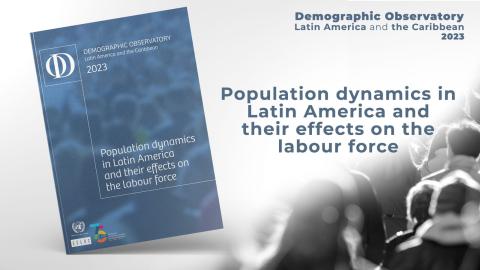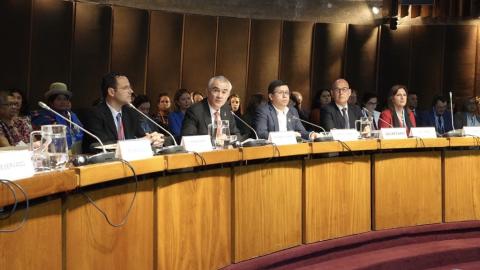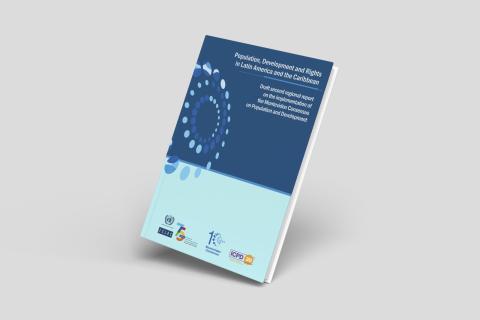Press Release
(6 July 2012) Nearly one third of young people in Latin America and the Caribbean live in poverty, which endangers the exercise of the rights enshrined in international instruments, as states the report entitled Invertir en juventud en América Latina y el Caribe: un imperativo de derechos e inclusión (The Investing in Latin American and the Caribbean Youth: a right and inclusion imperative), presented by the Economic Commission for Latin America and the Caribbean (ECLAC) and the United Nations Population Fund (UNFPA) in Quito.
The document shows a demographic profile of the youth in the region, analyzes poverty and wretched poverty, examines the access to education and employment, as well as the range of training and labour integration programmes, and explores social participation. The text was presented in the context of the ECLAC Ad Hoc Committee on Population and Development, to conclude today in the Ecuadorian capital.
In the report, ECLAC and UNFPA call for the design of comprehensive social protection and promotion systems for the youth in the region. Both institutions state the need to reach an agreement to invest in the youth with positive measures to be taken in the most vulnerable sectors, such as women and young people in rural areas, as well as those belonging to indigenous peoples or Afro-descendant communities.
According to UN data from 2011, in Latin America and the Caribbean, the population between 15 and 29 years old accounts for 26% of the total population. Currently, most of the countries of the region are experiencing a phenomenon known as "demographic bond", in which the largest percentage of the population is old enough to work and be productive compared to the groups considered dependent (children and old persons). This situation generates opportunities for social investment.
According to the document, in 2009, the poverty and wretched poverty incidence among young people between the ages of 15 and 29 in the region amounted to 30.3% and 10.1%, respectively. This group, together with children under 15 years old, is the most vulnerable to poverty in Latin America.
In Argentina, Chile and Uruguay, poverty incidence in the same ages is below 15%, whereas wretched poverty amounts to 5%; on the other hand, poverty affects more than 50% of the youth in Bolivia, Guatemala, Nicaragua and Paraguay, whilst in Honduras the incidence reaches 60%.
The document also alerts on the increasing tendency to teenage pregnancy in the region, especially in lower-income sectors of the population - in contrast with the decreasing global fertility. These are the cases of Guyana, Montserrat and Aruba, in the Caribbean, and of Colombia, Bolivia, Mexico and Venezuela, in Latin America.
On the other hand, 16% of young people between 15 and 29 in Latin America are not integrated into the education system or into the labour market, according to the report. Some of these young people carry out unpaid household tasks or live with disability, whereas others do not perform any specific activity.
"This group known as ‘the ni-ni generation' [from the expression in Spanish ‘ni estudiar ni trabajar', ‘not studying, either working], because of being left out of both the education system and the market, denotes a persisting structural mechanism of social exclusion," alerts the document.
The consequences of this double exclusion, adds the report, are very serious. On the one hand, it constitutes an explicit violation of the rights of the youth to education and employment; on the other, it directly hinders the opportunities for the region to break with the trans-generational transmission of poverty and leverage the demographic bond.
"ECLAC states, more than ever, that a structural change in our way of producing, working and innovating is urgent, and the youth must be at the core of this change," said the Executive Secretary of the organization Alicia Bárcena when presenting the document. "Investing in the youth is fundamental for sustaining and boosting such a structural change," she underlined.
"The report intends to become a reference tool and document for informing policy-makers for the youth and decision-makers on investment priorities for the development of young people in this region," reads the prologue, signed by Bárcena and the UNFPA Director for Latin America and the Caribbean Marcela Suazo.
In this context, the Executive Secretary of ECLAC, together with the Ibero-American Youth Organization, highlighted the creation of the Knowledge System Ibero-American Youth, a type of observatory available to governments, the academia and Civil Society organizations, operating since the beginning of the year.
For further questions, please contact ECLAC's Public Information and Web Services Section.
E-mail: prensa@cepal.org; tel.: (56 2) 210 2040
Follow us on Twitter, Facebook, Flickr and YouTube.



